Smart technology has taken root in nearly every aspect of our lives—from how we communicate to how we travel—and the kitchen is no exception. But what happens when cutting-edge innovation meets the most functional room in your home? You get a smart kitchen that doesn’t just impress with shiny gadgets but actually works better for your daily needs.
A smart kitchen is an ecosystem of devices and appliances equipped with advanced technologies like Wi-Fi connectivity, sensors, AI, and app integration. These tools are designed to automate or simplify cooking-related tasks, making your kitchen more efficient, user-friendly, and in some cases, even safer.
Imagine controlling your oven with your smartphone, getting notified when your chicken reaches the perfect internal temperature, or having a scale that tells you exactly how many calories are in your smoothie. These aren’t futuristic dreams—they’re current-day realities thanks to the growing market of smart kitchen gadgets.
Unlike other rooms in the house, the kitchen involves a unique combination of tasks: preparing ingredients, cooking at specific temperatures, managing time, and cleaning up. Each of these areas offers opportunities where smart technology can shine. Here’s why:
Precision matters: A small error in cooking time or temperature can ruin a dish. Smart thermometers and guided cooking systems help eliminate guesswork.
Time is valuable: In busy households, every minute counts. Gadgets like app-controlled cookers or self-stirring pans can free up time for multitasking.
Health is a priority: Nutrition-focused tools, like smart scales or blenders with built-in calorie tracking, help users stick to health goals more easily.
Energy efficiency: Smart appliances often consume less power and offer eco-friendly settings, which can reduce your household’s energy footprint.
Smart kitchen gadgets aren’t just for tech-savvy people or professional chefs. They’re increasingly designed for everyday users—people who want to cook faster, cleaner, and with more confidence. Whether you’re reheating leftovers, meal-prepping for the week, or entertaining guests, these tools enhance the cooking experience in practical ways:
Busy mornings? A smart coffee maker can brew your favorite blend before your alarm goes off.
Juggling kids and dinner? A voice-controlled air fryer lets you adjust settings hands-free.
Want to try new recipes? Many smart appliances come with apps full of step-by-step cooking guides tailored to the appliance’s capabilities.
Still not sure if smart kitchen tools are more than just a fancy upgrade? Here are some tangible, real-world benefits:
Reduced food waste: With precise cooking and storage tools, you’re less likely to overcook or let food spoil.
Improved meal consistency: Sensors and preset modes mean your favorite dishes come out the same every time.
Hands-free convenience: Voice commands and remote controls let you manage cooking while handling other chores.
Enhanced safety: Features like automatic shut-off or temperature monitoring help prevent accidents, especially useful for households with kids or elderly family members.
By blending technology with everyday practicality, smart kitchen gadgets are not only enhancing our cooking experiences but redefining them. Whether you’re a casual cook or a gourmet foodie, integrating smart solutions into your kitchen can help you save time, reduce stress, and cook like a pro—without needing to be one.
With the rise of smart home technology, the kitchen has become one of the most exciting spaces for innovation. But with so many gadgets flooding the market, how do you separate the gimmicks from the game-changers?
When investing in smart kitchen gadgets, it’s important to focus on features that provide genuine utility, save time, and improve your cooking experience—not just add flashy tech for the sake of it. Below are the key features to look for when shopping for smart kitchen appliances and tools.
Automation is at the heart of what makes a kitchen gadget “smart.” These features allow devices to perform tasks independently or with minimal human input, making them ideal for busy households or multitasking cooks.
What to look for:
Automatic timers and shut-off features
Sensors that adjust cooking settings based on food temperature or moisture levels
Preset programs for different types of food (e.g., chicken, rice, vegetables)
Self-cleaning modes for blenders, ovens, or coffee machines
Real-life benefits:
Reduced risk of overcooking or burning food
More time to focus on other tasks
Peace of mind when stepping away from the kitchen
One of the most convenient advancements in smart kitchen tech is remote control via smartphone apps or voice assistants like Amazon Alexa, Google Assistant, or Apple Siri.
What to look for:
Wi-Fi or Bluetooth connectivity
Companion apps with recipe integration and device control
Compatibility with voice-activated platforms (Alexa, Google Home)
Push notifications and real-time status updates
Real-life benefits:
Start preheating your oven while you’re still at the store
Monitor cooking progress without opening the lid or door
Use voice commands to adjust time or temperature while your hands are full or messy
Smart control adds flexibility and frees you from having to hover over your appliances, turning your kitchen into a hands-free zone.
Why clutter your kitchen with multiple appliances when one smart gadget can do it all? Multifunctional devices are not only space-savers but also provide better value for your money.
What to look for:
Air fryer ovens that can also roast, bake, and dehydrate
Pressure cookers with slow cooking, rice, yogurt, and sauté modes
Blenders that also heat for soups or work as food processors
Smart scales that double as nutritional trackers
Real-life benefits:
Saves countertop and storage space
Reduces the need for multiple single-use gadgets
Cuts down on cost and complexity
For small kitchens or minimalist cooks, multifunctional gadgets are the ultimate efficiency boosters.
Smart kitchen gadgets often allow you to personalize cooking settings—whether that’s the temperature of your coffee, the doneness of your steak, or the intensity of blending.
What to look for:
Adjustable settings for temperature, texture, or timing
Saveable user profiles or custom presets
Guided cooking apps that tailor settings based on ingredients
Real-life benefits:
Perfect results based on your preferences
Easy replication of your favorite dishes
Greater control over dietary and nutritional choices
Custom settings elevate your kitchen from standard to personalized—ideal for picky eaters, families, or those with dietary restrictions.
A well-designed smart gadget should communicate with you. Whether it’s a pop-up alert or a subtle chime, timely updates ensure that you’re always in the loop.
What to look for:
Alerts for food readiness, low water levels, or ingredient reminders
Notifications for app updates or maintenance needs
Audible or visual alarms for safety issues (e.g., overheating, open lids)
Real-life benefits:
Avoids overcooking and undercooking
Helps plan your cooking steps more efficiently
Reduces the chance of forgetting a task or ingredient
Smart alerts act like a kitchen assistant that keeps you informed and on track.
Smart kitchen gadgets often include energy-saving modes or eco-friendly designs to help reduce your environmental footprint and monthly utility bills.
What to look for:
Auto power-off or sleep modes
Low-energy operation settings
Devices with Energy Star certification
Reusable components (e.g., washable filters, sustainable materials)
Real-life benefits:
Lower energy consumption and utility costs
Reduced waste and use of disposable components
A more sustainable kitchen setup without compromising performance
Going green has never been so tech-savvy—and it can pay off both environmentally and financially.
Even the smartest gadget is useless if it’s too complicated to use. The best smart kitchen tools offer intuitive interfaces that make them accessible to all users, from tech beginners to culinary pros.
What to look for:
Touchscreen controls with clear icons
Simple app interfaces with walkthroughs and tutorials
Quick-start modes and one-touch operations
Easy-to-clean surfaces and ergonomic designs
Real-life benefits:
Less time learning, more time cooking
Reduces frustration and increases satisfaction
More likely to use regularly, making the investment worthwhile
Smart doesn’t mean complex—it means smarter design, too.
If you already use smart devices around your home—like smart lighting, security systems, or thermostats—you’ll want kitchen gadgets that can sync and communicate within that same ecosystem.
What to look for:
Compatibility with IFTTT (If This Then That) automations
Syncing options with smart fridges, calendars, or meal planning apps
Shared hub support (e.g., Samsung SmartThings, Apple HomeKit)
Real-life benefits:
Streamlined smart home management
Advanced automation possibilities (e.g., “If oven turns on, start kitchen lights”)
Seamless integration of cooking into your lifestyle
The more your devices “talk” to each other, the more cohesive and efficient your home becomes.
The best smart kitchen gadget for you is one that fits your lifestyle, solves real problems, and doesn’t overwhelm you with unnecessary tech. While it’s tempting to go for the flashiest features, focus on functionality, ease of use, and long-term value.
Choosing the right features isn’t just about upgrading your kitchen—it’s about enhancing your everyday cooking experience in a way that saves time, reduces stress, and adds a little joy to your daily meals.
Not all smart kitchen gadgets are created equal. Some genuinely make your life easier by saving time, improving cooking accuracy, and helping you stick to your dietary goals. Below is a curated list of the best smart kitchen gadgets that are actually useful in daily life—not just hype or novelty.
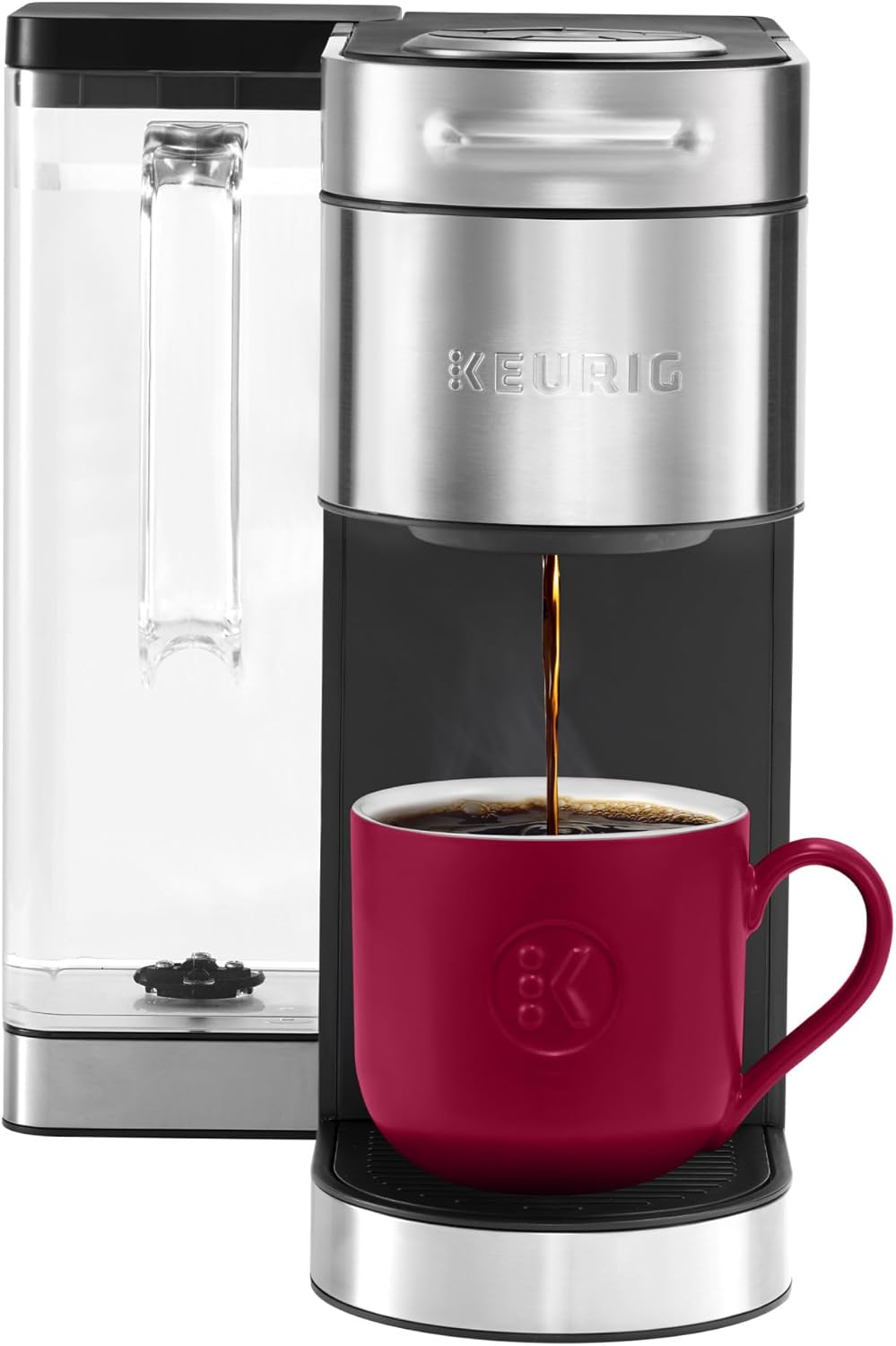
Key Features:
BrewID™ technology to recognize K-Cup pods and adjust brewing parameters
Wi-Fi enabled with app control for scheduling and customization
MultiStream Technology™ for more even flavor extraction
Compatibility with Alexa and Google Assistant
If coffee is part of your daily ritual, this smart brewer makes a compelling case for upgrading. The Keurig K-Supreme Plus SMART connects via Wi-Fi and allows you to schedule your coffee from the mobile app, choose from multiple strength and temperature settings, and save your personal preferences. It also recognizes the pod you insert and automatically optimizes brew settings for that specific coffee type.
For homes where different people like their coffee brewed in different ways, the ability to create user profiles is a genuine timesaver. While it costs more than a basic brewer, its precision and convenience make it an appealing option for regular coffee drinkers looking for consistency and ease.

Key Features:
Wi-Fi connectivity with smartphone control via WeMo app
Programmable cook times and temperature settings
Compatible with Alexa for voice-controlled operation
Removable stoneware and lid are dishwasher-safe
This smart slow cooker lets you take the guesswork out of slow cooking—even when you’re not home. Once connected, you can start, stop, and adjust cook settings remotely from your phone. Whether you’re stuck in traffic or decided to run an errand, you can delay dinner or switch to “keep warm” mode with just a tap.
It’s particularly useful for busy families or anyone who enjoys batch cooking without needing to babysit the pot. The main limitation is that the full feature set requires a stable Wi-Fi connection, and users unfamiliar with the WeMo app may find initial setup a bit clunky. Still, the time-saving benefits easily outweigh the learning curve.
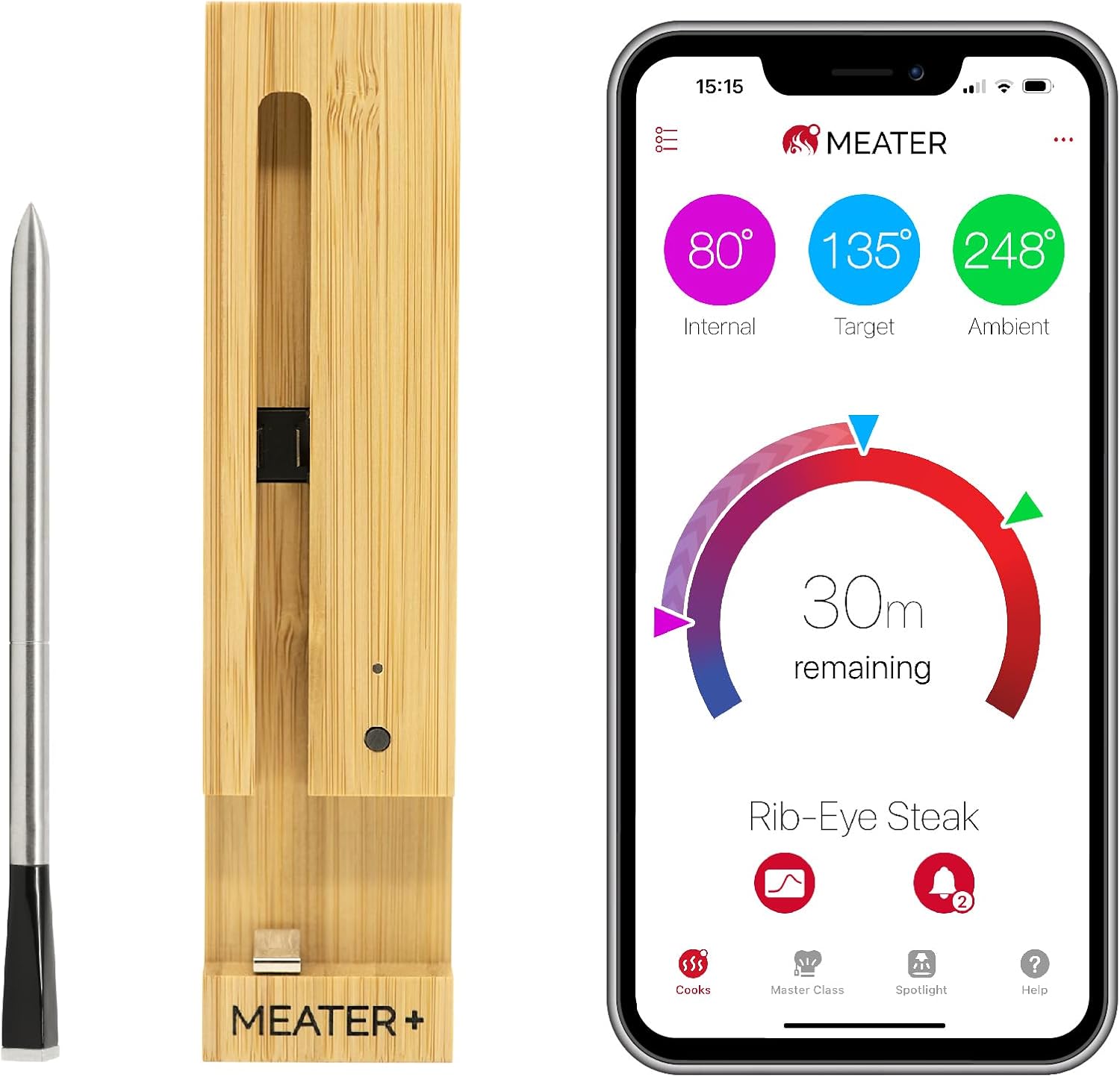
Key Features:
Dual sensors to monitor internal food temperature and ambient heat
100% wireless with Bluetooth and Wi-Fi connectivity
Guided cook system with step-by-step notifications
Up to 165 feet wireless range with the included charger acting as a signal booster
The MEATER Plus is a standout for anyone serious about meat. Whether you’re roasting, grilling, or smoking, it helps deliver perfectly cooked meat without the need to constantly open the oven or grill. The app guides you through the cooking process and even calculates resting time, which is essential for juicier results.
The wireless design eliminates annoying cables, making it especially convenient for outdoor cooking. While the app offers rich features, novice users may feel overwhelmed at first. And Bluetooth range can be affected by kitchen layout. But once set up, it provides consistent, stress-free cooking results.
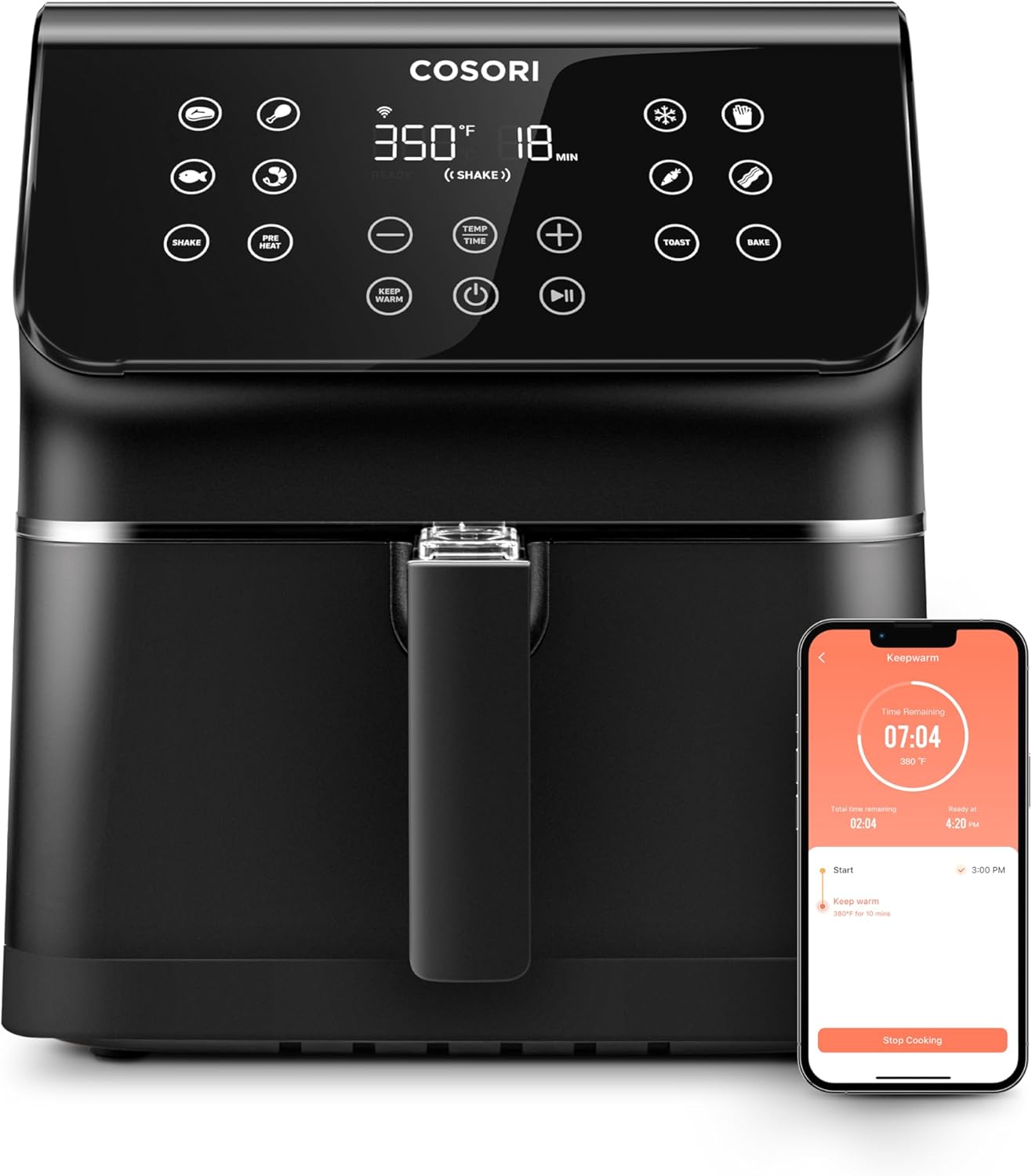
Key Features:
5.8-quart capacity and 12 cooking functions
Works with VeSync app and voice assistants like Alexa
Customizable cooking presets and shake reminders
Access to over 100 recipes via the app
The COSORI Pro II Smart Air Fryer combines the functionality of a traditional air fryer with the convenience of app-based and voice control. From frozen fries to salmon filets, this device allows you to control everything remotely and sends reminders when it’s time to shake or check your food.
Its large capacity makes it ideal for families, and the customizable presets save time during meal prep. The integrated app features guided recipes and automatic cooking settings, which is helpful if you’re still learning the air fryer game. On the flip side, the device is bulky and might take up significant counter space, but the performance justifies the footprint.
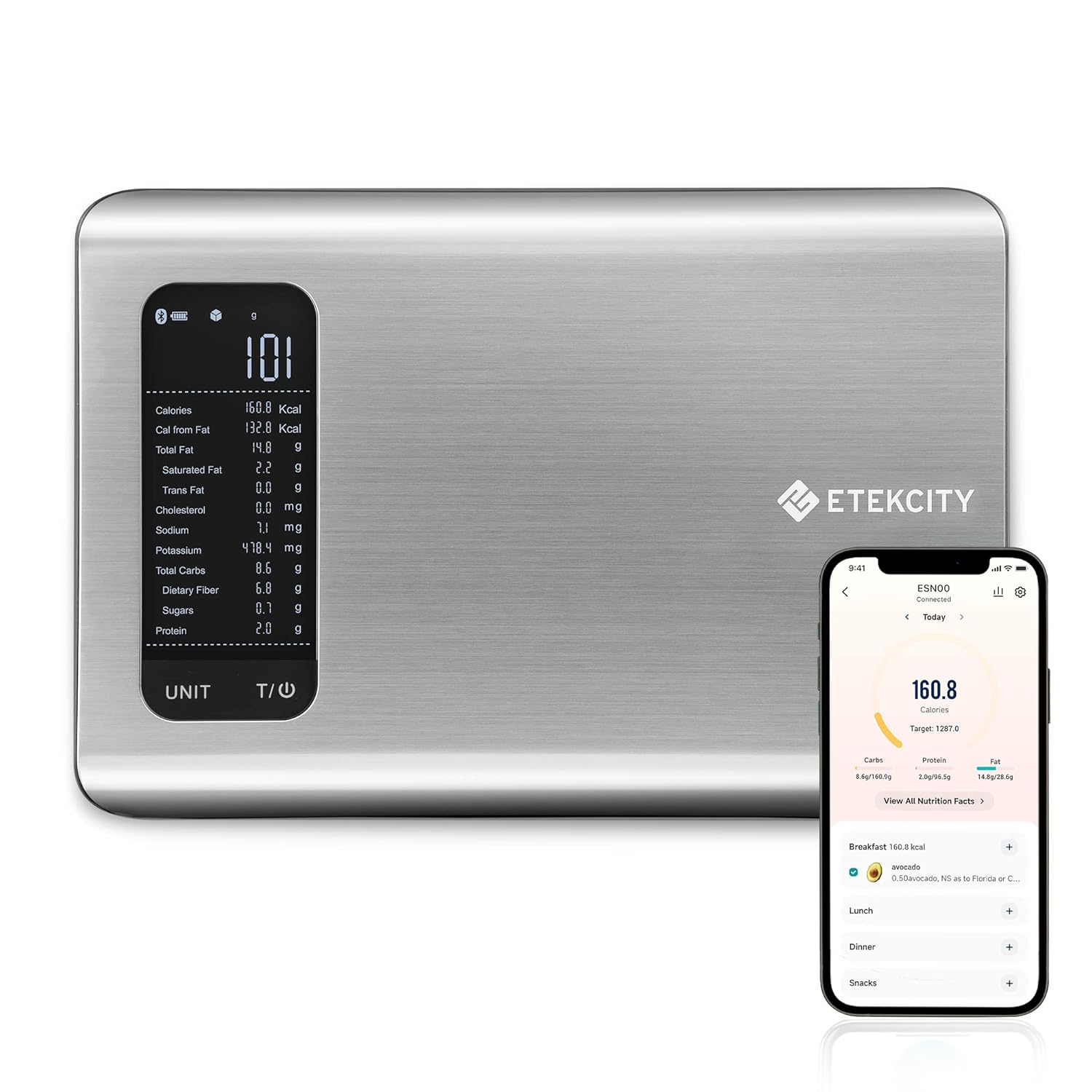
Key Features:
Real-time nutritional analysis for 5000+ foods
Syncs with Apple Health, Fitbit, and MyFitnessPal
Tracks calories, macros, and portion sizes
Tare function and smart app integration
For those tracking calories or managing a specific diet, the Etekcity Smart Nutrition Scale offers far more than just weight measurements. It delivers detailed nutritional information right to your smartphone, helping you make informed decisions about what—and how much—you eat.
You can build and save recipes, log entire meals, and track daily intake over time. This is especially beneficial for anyone following a strict eating plan or with dietary restrictions. While the app database is vast, some foods may require manual input or verification. Still, it’s a powerful tool for anyone seeking to take control of their nutrition.
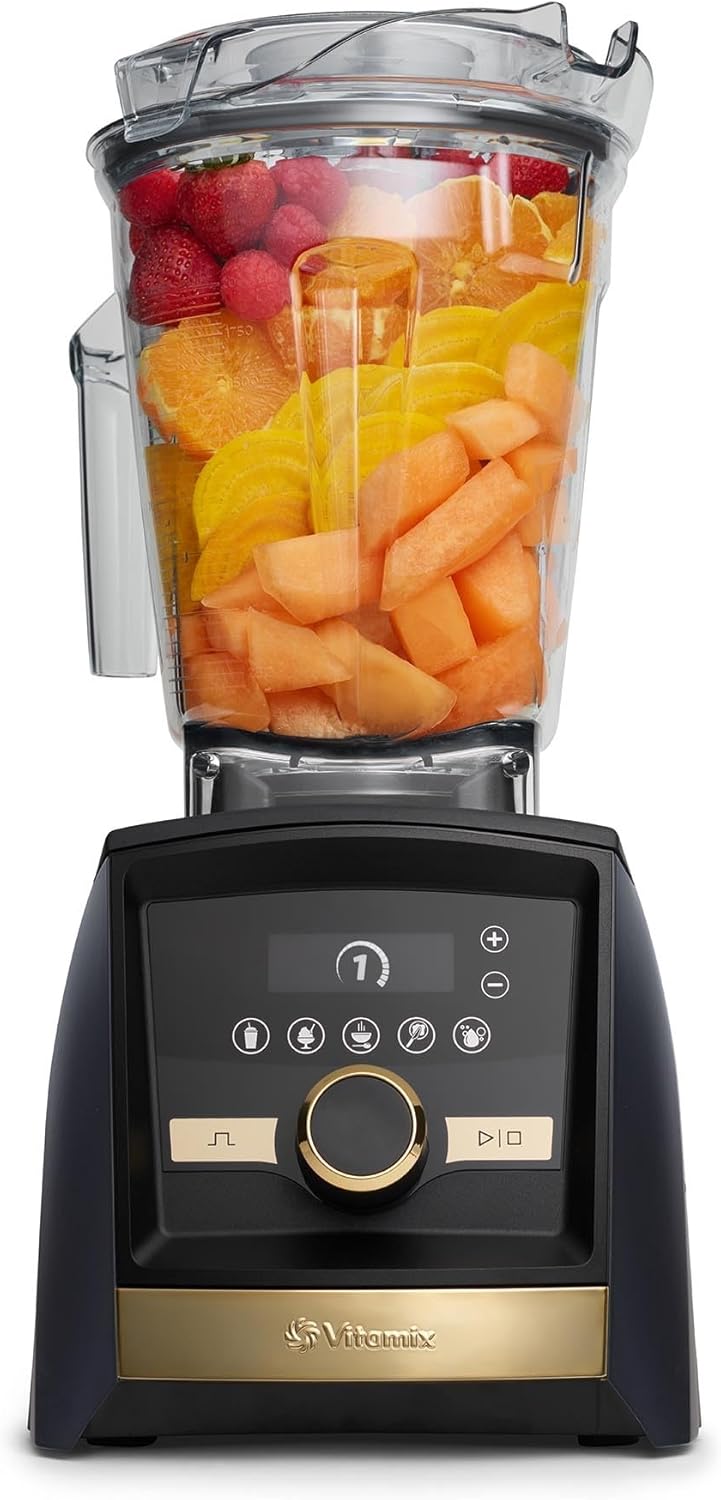
Key Features:
Touchscreen controls and programmable blending cycles
Built-in wireless connectivity for updates and app support
Self-detect containers that adjust settings automatically
Five pre-programmed settings: smoothies, hot soups, dips, frozen desserts, and self-cleaning
The Vitamix A3500 isn’t just a blender—it’s a smart, high-performance kitchen assistant. It offers an exceptional blend of power and intelligence, detecting the size of the container you’re using and adjusting settings accordingly. The touchscreen interface is sleek and easy to navigate, and pre-programmed modes deliver reliable results every time.
If you’re serious about smoothies, sauces, or soups, this device handles everything from ice to hot ingredients with precision. It’s a premium appliance, so it comes with a premium price tag. But for frequent users who value consistency, durability, and intelligent design, it’s a worthy investment.

Key Features:
Full-color touchscreen with digital countdown and progress bar
Smart settings for different bread types and frozen items
InstaGLO heating technology for faster, more even toasting
Customizable toasting profiles for consistent results
Revolution’s R180 Smart Toaster brings technology to one of the simplest kitchen tasks: making toast. But it does it well. The toaster features a vivid touchscreen where you choose the bread type, freshness (fresh or frozen), and desired browning level. It then adjusts heat and timing accordingly, delivering consistent, evenly toasted slices.
Its speed is impressive, and the results are surprisingly superior to traditional toasters. The screen also provides alerts and reminders, which are helpful if you’re multitasking in the kitchen. The downside? It’s a luxury item in the toaster world, and the cost reflects that. But if toast is a daily staple, this device elevates the experience significantly.
The rise of smart kitchen gadgets has prompted a common question: Are they really better than the traditional tools we’ve used for decades? The short answer is: it depends on your lifestyle, cooking habits, and expectations.
Smart kitchen devices promise convenience, precision, and automation—but that doesn’t mean traditional tools are obsolete. Let’s explore where the real value lies, and when it makes sense to upgrade.
Smart gadgets often come with sensors and digital controls that deliver more precise results. A smart thermometer, for example, continuously monitors internal temperature and alerts you via your phone the moment your steak hits medium rare. Traditional analog thermometers require constant checking and can be hard to read accurately.
Use Case:
If you’re cooking meat, tempering chocolate, or baking delicate pastries, even slight variations in temperature or time can make a big difference. Smart tools give you control down to the degree and the second.
Verdict:
For high-stakes or precision cooking, smart tools offer a clear advantage over manual methods.
With Wi-Fi or app connectivity, many smart devices can be controlled remotely. Forgot to start the slow cooker before leaving for work? A smart model lets you turn it on from your phone. Need to preheat the oven while you’re finishing a workout? Smart ovens have you covered.
Use Case:
This is especially useful for busy households, people who meal prep, or anyone who juggles multiple tasks at once.
Traditional Tools:
Manual appliances require you to be physically present and attentive. You also have to remember to turn them off or adjust them at the right time.
Verdict:
For multitaskers or people with unpredictable schedules, smart gadgets offer undeniable time-saving benefits.
Traditional tools are usually straightforward—plug them in, turn a knob, or use manual effort. There’s little to no learning curve. They’re also less prone to tech glitches.
Smart Gadget Consideration:
Smart appliances can involve a learning curve, require app installation, and depend on a stable internet connection. Firmware updates and mobile interfaces might frustrate users who prefer simplicity.
Verdict:
For tech-savvy users, the learning curve is minor. But if you prefer minimal fuss or don’t like relying on apps, traditional tools may feel more reliable and accessible.
Manual tools tend to be mechanically simpler and often last longer without issues. Fewer electronic components mean fewer chances of failure or compatibility problems in the long run.
Smart Gadget Consideration:
Some smart gadgets may become outdated or unsupported over time. If an app is discontinued or the manufacturer stops updates, functionality can be limited. Devices with digital components can also be more sensitive to moisture, heat, or wear.
Verdict:
For longevity and durability, traditional tools often win—especially if they’re well-made and well-maintained.
Smart kitchen tools typically cost more than their manual counterparts. For example, a traditional toaster might cost $30, while a smart toaster can run upwards of $300. The added value comes from features like app control, automation, or customization.
Value Perspective:
If a smart tool saves you time daily, reduces food waste, or helps you eat healthier, the return on investment may be worthwhile. But not every task requires smart intervention. For simple tasks like boiling water or slicing vegetables, traditional tools are often just as efficient.
Verdict:
Evaluate how often you cook, how much convenience matters to you, and what your budget allows. Smart gadgets are worth it when they solve recurring pain points, not when they add complexity to basic tasks.
If you’re already using smart home devices—like thermostats, voice assistants, or smart lights—kitchen gadgets that integrate into that ecosystem can provide seamless routines. For example, you could use a voice command to start your coffee maker and dim the kitchen lights at the same time.
Traditional Limitation:
Traditional tools are standalone. There’s no cross-device communication or automation.
Verdict:
For smart home users, integrating kitchen gadgets into your existing ecosystem enhances convenience and overall experience.
| Feature | Traditional Tools | Smart Gadgets |
|---|---|---|
| Ease of Use | Simple and intuitive | May require setup and app use |
| Precision | Manual adjustment | Sensor-driven accuracy |
| Remote Control | Not available | App and voice-controlled |
| Durability | Long-lasting, fewer tech issues | Prone to updates and connectivity issues |
| Cost | More affordable | Higher upfront investment |
| Maintenance | Minimal | May need firmware updates or re-pairing |
| Customizability | Limited to user skill | Profiles, presets, and automated functions |
| Integration | Standalone | Part of smart home ecosystem |
Smart kitchen gadgets aren’t just about having the latest tech—they’re about improving how you cook, eat, and live. From automating repetitive tasks to helping you cook more precisely and efficiently, these tools are designed to make your kitchen more functional and your life more manageable.
But the key to getting the most out of smart gadgets is choosing the ones that actually solve a problem in your routine. If you’re constantly overcooking meat, a smart thermometer can be a game-changer. If you struggle with portion control or meal planning, a smart scale can offer real, daily support. Start by identifying the points of friction in your cooking experience—then look for tech that eases that pressure.
It’s also important to think about your long-term needs. While traditional tools may last longer and require less maintenance, smart devices offer dynamic functionality that evolves with your lifestyle. As software updates roll out and features improve, the best smart gadgets become more valuable over time—not just tools, but digital assistants in your culinary journey.
You don’t have to create a fully automated kitchen overnight. Even one or two well-chosen gadgets can make a noticeable difference. Think of it as an investment not just in appliances, but in time, health, convenience, and the joy of cooking.
So whether you’re tech-curious or ready to fully embrace a connected kitchen, start small, choose wisely, and build a space that truly supports the way you cook. Smarter cooking isn’t about complexity—it’s about creating a kitchen that works better for you.
| Cookie | Duration | Description |
|---|---|---|
| cookielawinfo-checbox-analytics | 11 months | This cookie is set by GDPR Cookie Consent plugin. The cookie is used to store the user consent for the cookies in the category "Analytics". |
| cookielawinfo-checbox-functional | 11 months | The cookie is set by GDPR cookie consent to record the user consent for the cookies in the category "Functional". |
| cookielawinfo-checbox-others | 11 months | This cookie is set by GDPR Cookie Consent plugin. The cookie is used to store the user consent for the cookies in the category "Other. |
| cookielawinfo-checkbox-necessary | 11 months | This cookie is set by GDPR Cookie Consent plugin. The cookies is used to store the user consent for the cookies in the category "Necessary". |
| cookielawinfo-checkbox-performance | 11 months | This cookie is set by GDPR Cookie Consent plugin. The cookie is used to store the user consent for the cookies in the category "Performance". |
| viewed_cookie_policy | 11 months | The cookie is set by the GDPR Cookie Consent plugin and is used to store whether or not user has consented to the use of cookies. It does not store any personal data. |